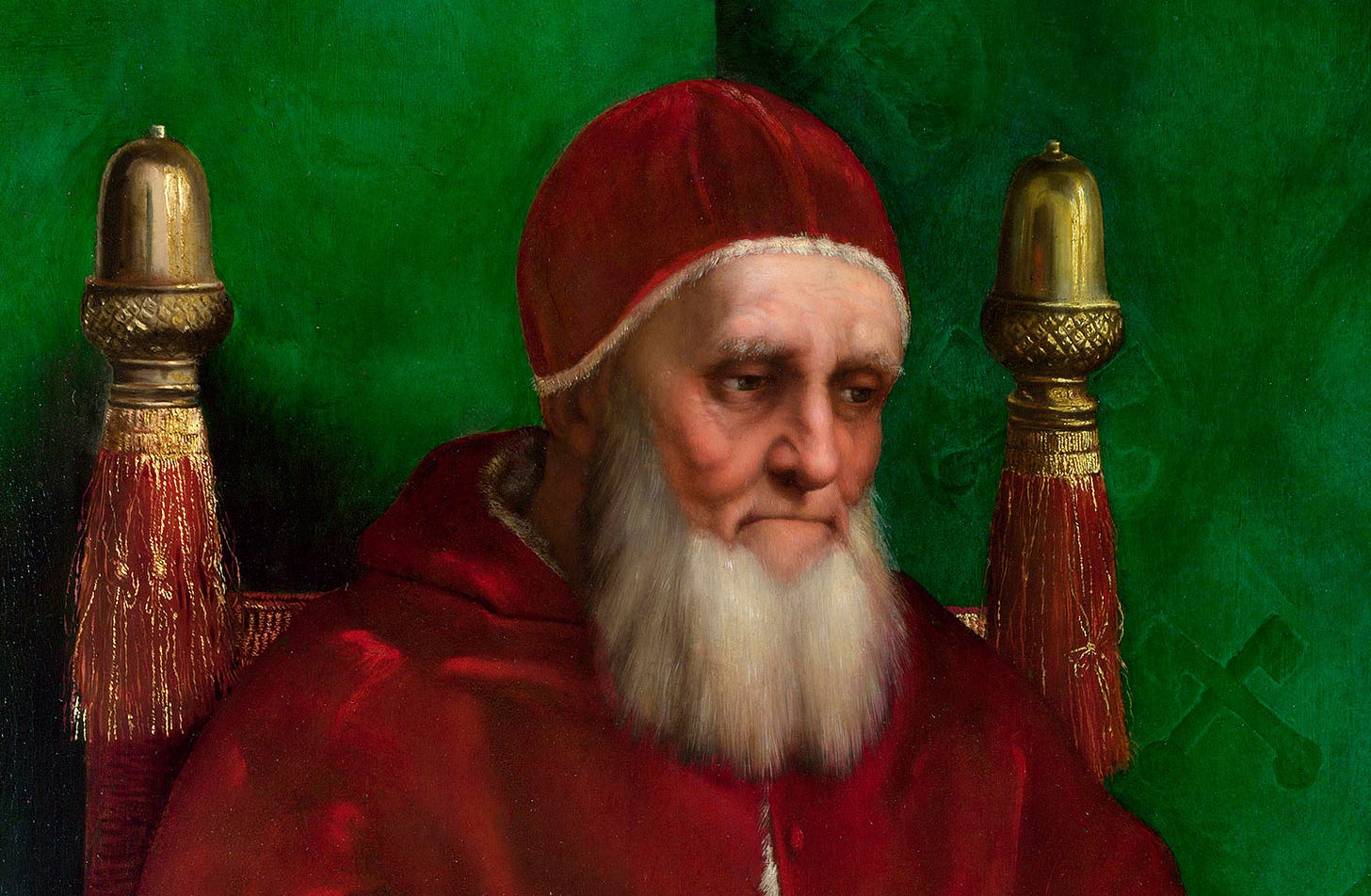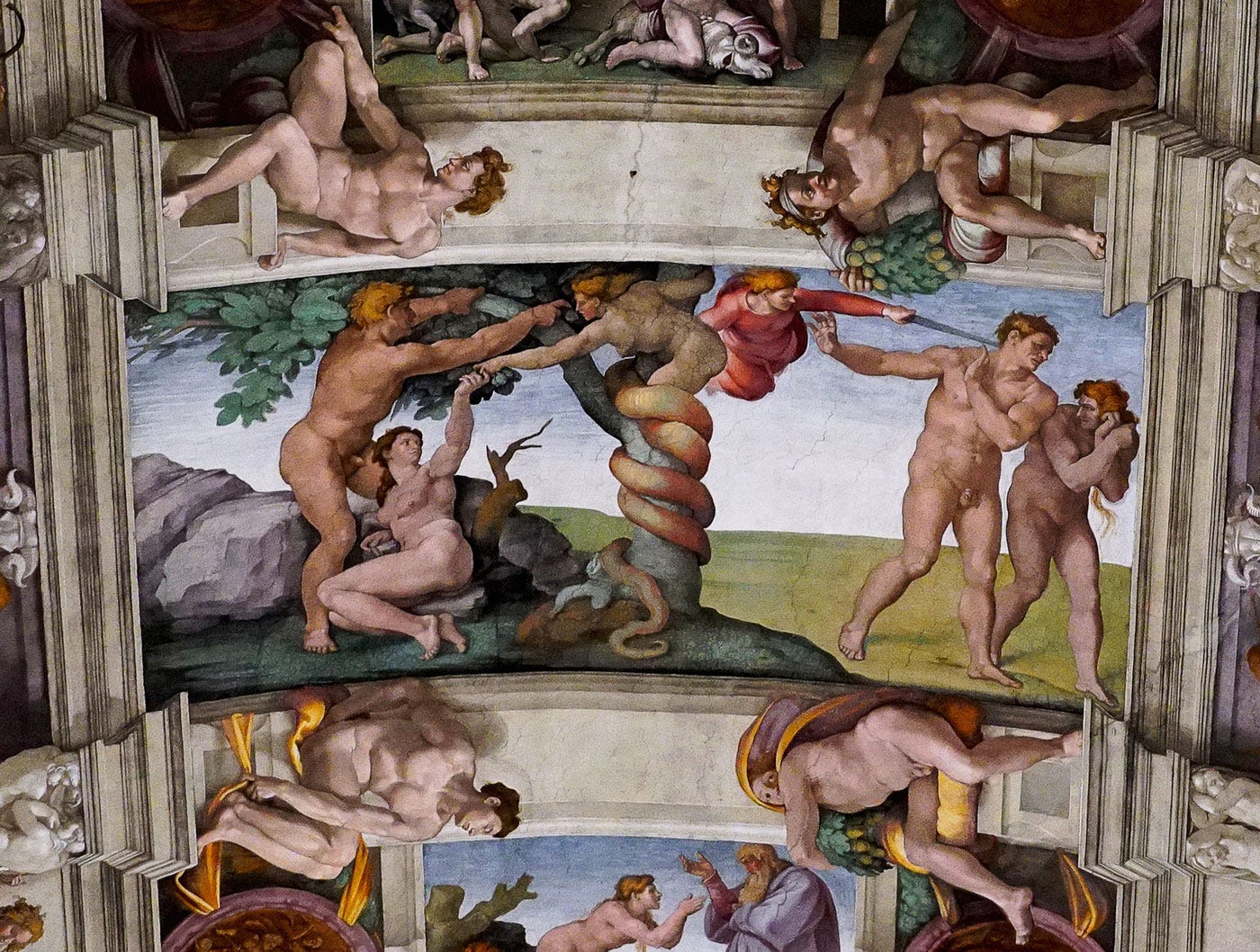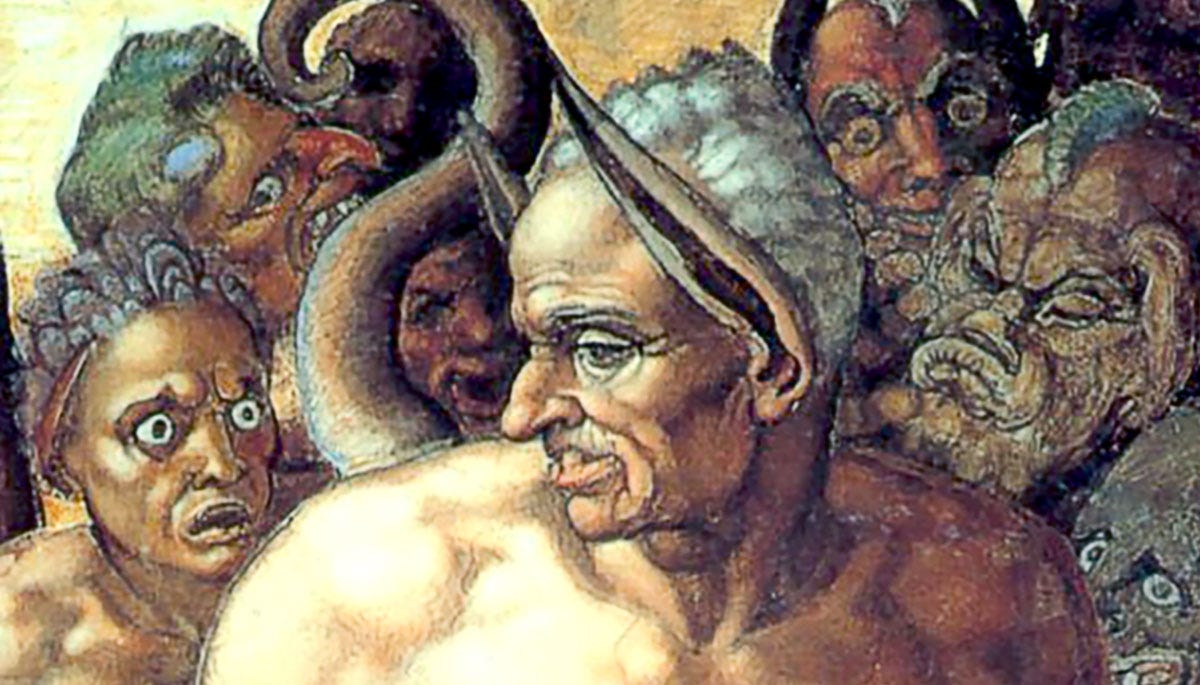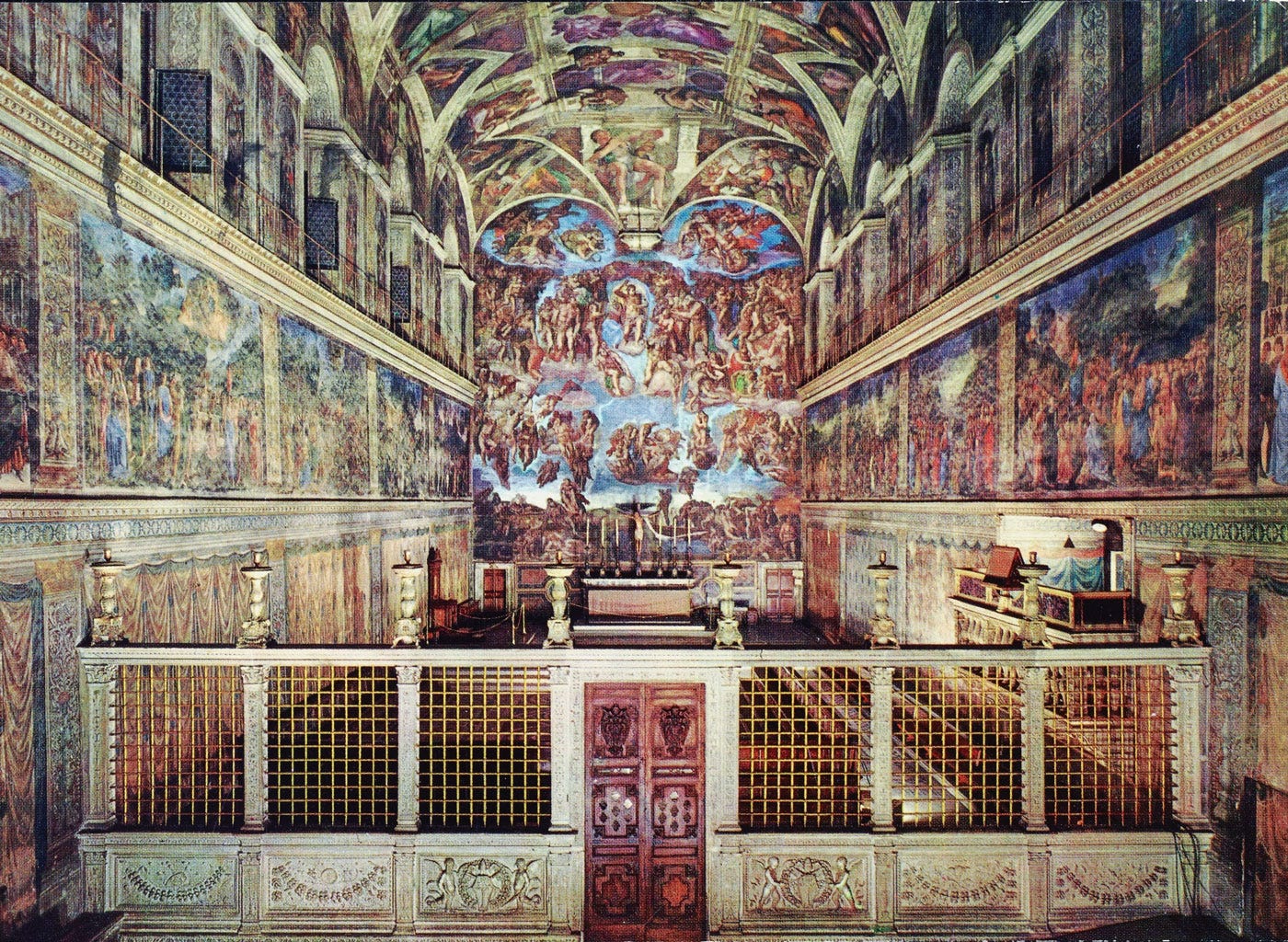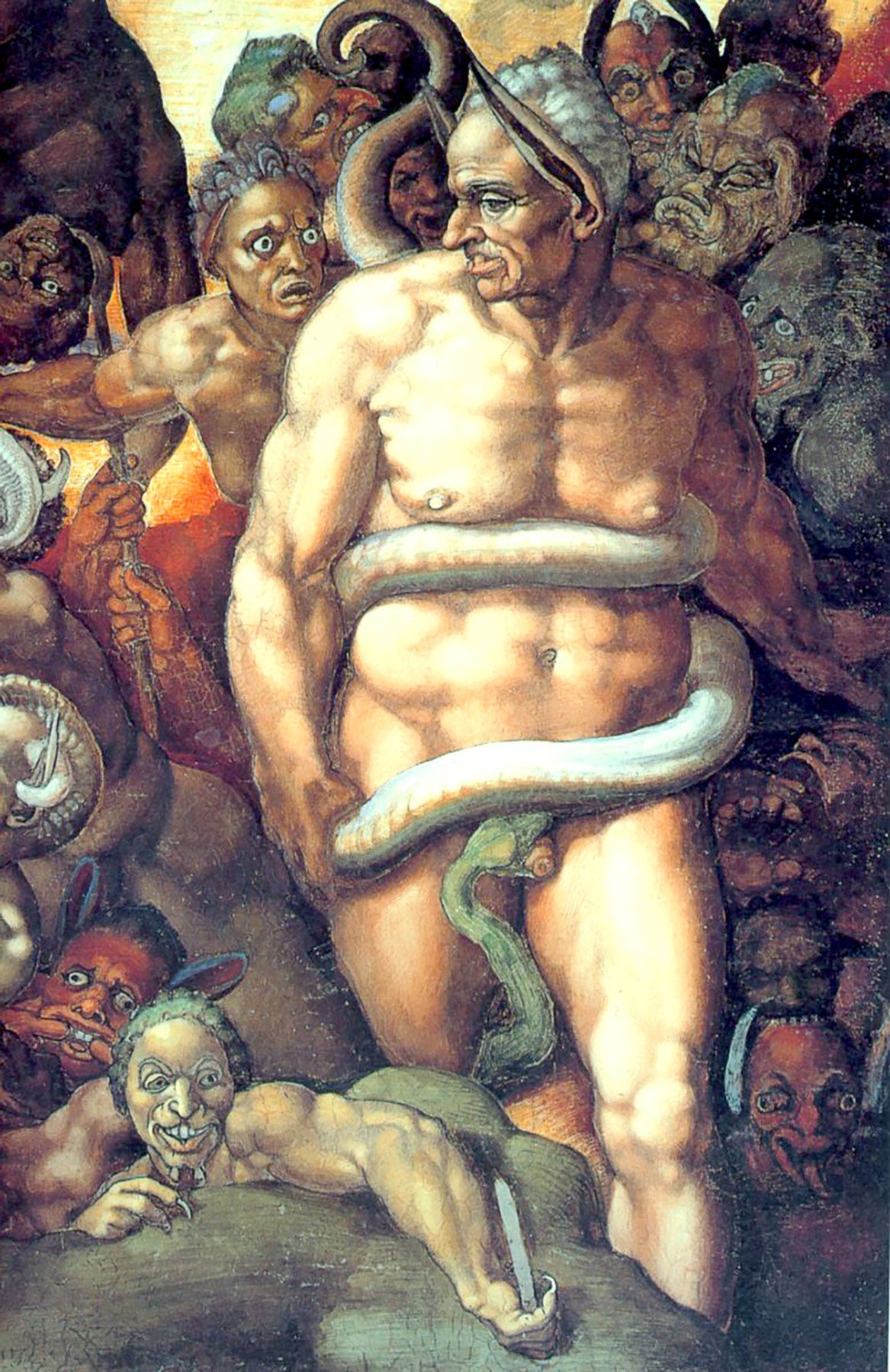We've already discussed how being nice to a genius, Vincent Van Gogh, might grant you eternity.
Today, we explore the other side of the coin, insulting another genius, Michelangelo.
History of Michelangelo Suffering Fools
#1 - David's big nose
The ruler of the Republic of Florence criticized Michelangelo:
While Michelangelo was giving it the finishing touches, he told Michelangelo that he thought the nose of the figure was too large.
Imagine telling Michelangelo that David's nose was too big!
Here is what Michelangelo did:
He quickly grabbed his chisel in his left hand along with a little marble dust that he found on the planks in the scaffolding.
Michelangelo began to tap lightly with the chisel, allowing the dust to fall little by little without retouching the nose from the way it was.
Then, looking down at the Gonfaloniere who stood there watching, he asked 'Look at it now.'
'I like it better, you've made it come alive.'
Michelangelo laughed to himself, feeling compassion for those who, in order to make it appear that they understand, do not realize what they are saying.
Plain English translation: stick to politics, and don't tell me how to carve statues.
#2 - Late payment from the Pope
Once, Michelangelo had to pay out of his pocket for Carrara marble on the Pope's behalf.
He expected to be swiftly reimbursed, but when he realized that would not happen, Michelangelo jumped on a horse and left Rome.
Plain English translation: the Pope needs to find someone else to paint and carve for him.
#3 - No snooping, even from the Pope
Michelangelo did not suffer meddling visitors while he was painting the Sistine Chapel, even if it was the Pope:
He dropped some planks when the Pope entered the chapel, not thinking about who it was and forcing the pope to leave in anger.
Plain English translation: Michelangelo threw things at the Pope to get him out.
#4 - Two ill-tempered men, the Pope and Michelangelo
By the time Michelangelo had completed half of the Sistine Chapel ceiling, the Pope was delighted but insistent that the artist should speed up.
Here is what happened:
Michelangelo sometimes complained that because of the Pope's haste he was not able to complete it in his own way as he would have wished, since the pope importunately demanded to know when he would finish;
Michelangelo replied that the work would be finished "when it satisfies me in its artistic details".
"And We", remarked the Pope, "want you to satisfy Us in Our desire to see it done quickly."
Finally, the Pope threatened that if Michelangelo did not finish quickly, he would have him thrown down from the scaffolding.
And on another occasion, the Pope asked:
'Well, what about this chapel? When will it be finished?'
'When I can, Holy Father,' replied Michelangelo.
The Pope, who had a staff in his hand, struck Michelangelo with it as he declared:
"When I can, when I can: I'll make you finish it myself!"
The painter wanted to achieve perfection, while the Pope wanted his ceiling asap.
Match result: Pope 1 - Michelangelo 0.
Now you realize that Michelangelo did not gladly suffer fools, we need to discuss the change of attitude regarding nudity.
Religious and artistic winds turn in Rome
Twenty-five years after the ceiling, Michelangelo returned to the Sistine Chapel to paint the Last Judgment.
In the meantime, a few things happened, like some German nailing prints on doors, which ruffled fur caps and gold chains in Rome.
The Reform meant that nudity was becoming an issue.
Who was the leading proponent of the nude human figure? Michelangelo.
A stew of nudes in the Sistine Chapel
One should not be surprised at the nudity visible on the ceiling of the Sistine Chapel.
Michelangelo was illustrating Scripture, starting with Genesis:
And they were both naked, the man and his wife, and were not ashamed.
The same goes for the Last Judgment.
Just look at the entrance of many medieval cathedrals and churches.
Hence, it was not particularly revolutionary for Michelangelo to paint nudes in the Sistine Chapel.
Fool insults Michelangelo to his face
While you may know the story already, let's discuss it and what happened afterward.
The fool is Biagio da Cesena, and his mistake was to say out loud what many thought.
He declared that it was a most unseemly thing in such a venerable place to have painted so many nudes that so indecently display their shame and that it was not a work for a Pope's chapel but rather one for baths or taverns.
Understand bath to mean 'brothel'.
This comment displeased Michelangelo, and, wishing to avenge himself, as soon as Messer Biagio had left, he drew his actual portrait without his being present, placing him in Hell in the person of Minos with a large serpent wrapped around his legs in a heap of devils.
The problem became serious when the Pope's envoy explained that His Holiness wanted the painting "tidied up".
Michelangelo's response:
Tell the Pope this is a small thing and can be very easily tidied up; in the meantime, he should tidy up the world.
In plain English, a polite 'get lost'.
Attacks rain on Michelangelo's Sistine Chapel paintings
According to one critic, Michelangelo was an inventor of filth.
Another said the painting was:
A sight to which eyes would be shut tight even in a brothel.
What you have done would be appropriate in a voluptuous whorehouse, not in a supreme choir.
By then, Michelangelo was 88 years old.
He carved marble for Popes, painted the Sistine Chapel, and designed the dome of the Vatican.
And, for a lifetime of service, his reward was in this order:
The pictures in the Apostolic Chapel should be covered over, and those in other churches should be destroyed, if they display anything obscene or clearly false.
Having to choose between destruction and adding fig leaves; fortunately, it was decided to add fig leaves to the offensive areas of the Sistine Chapel.
But that was not enough:
Paul IV wished to throw it to the ground, saying it was not right that in St Peter’s there should be such wicked exhibition of nakedness and buffooneries.
Half a dozen Popes discussed destroying an artistic marvel. The last serious threat was from Pope Clement VIII:
The Pope wished that Michelangelo’s painting be scrapped off, as it was dishonest.
He was put off by the director of the Arts Academy, who begged that Rome not be deprived of such a marvel.
Insult a genius and become a fool for eternity
Humanity's gain was one man's loss.
The painting of Biagio da Cesena in Hell sporting donkey's ears survived. The 1980s restoration campaign removed all the painted-over fig leaves.
This revealed Biagio's sensitive—but shameful—area bitten by a snake. Ouch.
There's no need to bring binoculars; the scene is right above the door that 6 million people walk through each year.
Biagio da Cesena's punishment for insulting a genius is repeated millions of times a year, forever.
Making him eternal, just not the way he would have wanted.
The moral of the story: don’t mess with a genius who has a paintbrush in hand!
Notes
Vasari, the Lives of the Most Excellent Painters, Sculptors, and Architects.
https://www.gutenberg.org/files/31938/31938-h/31938-h.htm#Page_197
Carlo Pietrangeli, The Sistine Chapel: The Art, the History, and the Restoration.
The Life of Michelangelo, Ascanio Condivi.
https://artsandculture.google.com/asset/the-sistine-chapel-vatican-city-rome/wwFbKdFx4QVpTg?hl=en
https://www.nationalgallery.org.uk/paintings/raphael-pope-julius-ii
https://www.flickr.com/photos/justaslice/49909089618
https://commons.wikimedia.org/wiki/File:1083_restauro-267.jpg
https://www.vatican.va/various/cappelle/sistina_vr/index.html
https://commons.wikimedia.org/wiki/File:Michelangelo-minos2.jpg







